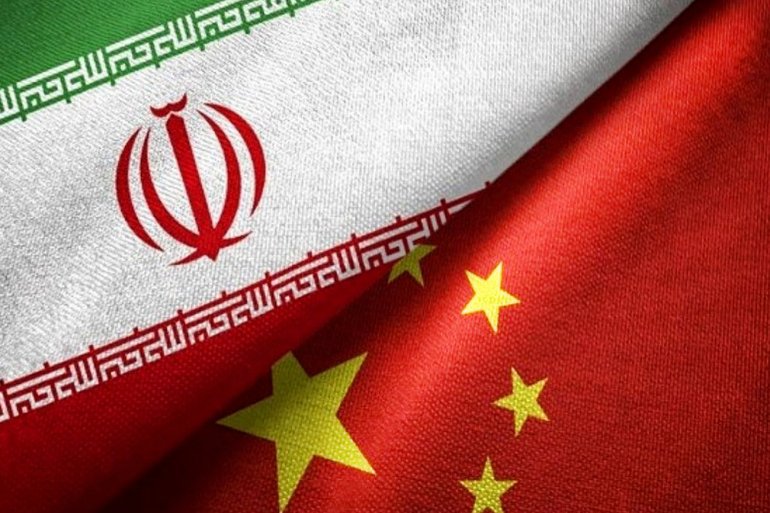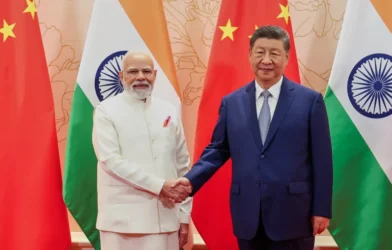Subtotal $0.00
The rise of China is a reality that haunts the "West" more than ever, and attempts are coming accordingly to put obstacles in front of it by all means, as representatives of the European Union countries agreed last week to blacklist Chinese officials, including travel bans and asset freezes because of China's treatment of the Uighur Muslim minority, and these sanctions will become effective if they receive the approval of the European Union foreign ministers at their meeting on Monday, March 22, apparently as part of broader sanctions The Dutch parliament has considered what is happening to the Uighurs to be genocide, following the US and Canadian position, which was followed by strong Chinese reactions, confirming that China will not stand idly by in the face of what it called "confrontation" and will defend the rights of its people.
All this is accompanied by the visit of US Secretary of Defense Lloyd Austin to India to activate the QUAD grouping, also known as QSD, which includes the United States of America, Japan, India and Australia, and was established in 2007 at the invitation of Japanese Prime Minister Shinzo Abe and the support of US Vice President Dick Cheney, Indian Prime Minister Manmohan Singh, and Australian Prime Minister John Howard, followed by unprecedented military maneuvers for these countries, known as the Malibar maneuvers, which were aimed at limiting Chinese expansion on the continent and confronting China's military and economic rise. It aimed to limit Chinese expansion in the continent, confront China's military and economic rise, and find an alternative to its projects, which later became known as the Belt and Road Initiative (BRI). However, the change of the Australian prime minister brought the grouping into a state of stalemate until 2017, when these four countries reactivated it at the ASEAN summit, and the direct goal was to confront Chinese encroachment in the South China Sea (South China Sea).
Some political analysts argue that this grouping could serve Japan, India, and Australia, but it is unlikely to serve the United States. This grouping shifts the American focus from the Pacific Ocean and East Asia, where the real interests of the United States are, which are sparsely populated and relatively easy to protect, to the South China Sea and South Asia, where the world's largest population is concentrated and the largest armies and navies on the planet are assembled: China, Indonesia, India and Pakistan, as well as the Philippines and Vietnam.
This leaves the United States with two options, both of which are difficult: The first is to go against its adopted strategy of reducing forces and concentrating power, avoiding the causes of the collapse of great powers as stipulated by the theory adopted by the British historian Paul Kennedy in his book The Rise and Fall of the Great Powers, who claimed that one of the main causes of the collapse of empires is expansion and proliferation, and send enough troops and military equipment to protect this dangerous region, which means that it will be a large number of troops and large equipment that will cost huge costs. This means that it will be large forces and large equipment that will cost it huge costs, or it will be satisfied with limited and verbal support, which will be exposed and dissipated at the first confrontation and will bring American credibility and deterrence to the bottom, while on the other hand, Australia, Japan, and India will work to increase their influence in the region, using American power.
The rising powers in the region, namely Iran and Turkey, are almost unmistakable, and the Arabs may one day find themselves forced to knock on the door of one of them, if the Arab situation continues as it is, despite all the fanfare of the official Arab media, as everyone knows, fanfare does not produce flour.
One of the results of the QUAD gathering was to adopt support for India in the face of China, as it is the objective equivalent of China in many respects, including size, population, and the antiquity of civilization. India even surpasses it in terms of fertility and the young age of the population, meaning that Indian society is more youthful than its Chinese counterpart, and therefore we saw how these countries supported India in manufacturing the anti-Corona vaccine, as America and Japan guaranteed funding and knowledge transfer, while Australia took care of logistical matters based on the fact that India is the largest producer of vaccines in the world, of course, based on the fact that India is the largest vaccine producer in the world.
Today, India is competing with China in what is called vaccine diplomacy. China, which has distributed about 60% of coronavirus vaccines and managed to sell these vaccines on every continent, is now facing India, which in turn is producing one billion vaccines from Johnson & Johnson (J&J) of the United States J&J vaccine and the AstraZeneca vaccine, and distributing it to more than sixty countries, including neighboring countries such as Bangladesh, Afghanistan, Nepal, Bhutan, Sri Lanka, Maldives, Cambodia, Mongolia, and the Seychelles, and not just distributing it locally, thus leaving no room for China to expand.
However, this argument, which is pursued by some Indian researchers and politicians and depends on the support of these powers for India against China, ignores the fact that the West's fear is not of China alone, as the West that fears the rise of China will also be an additional nightmare for it, as the rise of China and India together reinforces the most important thing it fears, namely the shift of the center of global influence from the West to the East, meaning that Asia becomes the center of the world again, as it was before the eighteenth century, as the Chinese and Indian economies each constituted more than a quarter of the world production, meaning that they combined accounted for more than half of the world's economy, in addition to the share of the rest of the continent, then what guarantees that India will not one day find its interest with both China and Pakistan, and shift its position accordingly? Then what is the guarantee that India will not one day find its interest with both China and Pakistan and shift its position accordingly, which in the political world is not impossible, so with all the Western propaganda about the "free world" and "democratic forces" uniting under one banner to confront "Chinese tyranny," it is unlikely that America and Western countries will go with India to the end of the road, unless it enters into a direct confrontation with China that results in the destruction of the two Asian giants.
In the midst of this raging conflict between the major powers, the absence of the Arab world from the theater of events is striking. It is true that the major battles are taking place on its land, with the blood of its people, and on its bounty, yet you hardly hear a whisper or a stir. Arab governments always have something to worry about, spending time in conflict with their citizens, themselves, or their neighbors, in a complete absence of a role reminiscent of George Orwell's 1984.
The rising powers in the region, namely Iran and Turkey, are almost unmistakable, and the Arabs may one day find themselves forced to knock on the door of one of them, if the Arab situation continues as it is, despite all the fanfare of the official Arab media, as everyone knows, fanfare does not produce flour.






